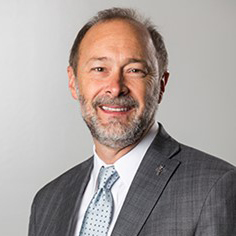Tri-State Generation and Transmission may finally have in place exit procedures for members leaving the cooperative, but regulatory roadblocks remain for the contract termination payment (CTP) methodology.
FERC issued an order Oct. 29 accepting the co-op’s proposed methodology effective Nov. 1, subject to refund, and rejecting nearly a dozen protests from members. However, the commission said its preliminary analysis indicates that the methodology has not been shown to be just and reasonable and established hearing procedures to address issues not in the record (ER21-2818).
The commission also opened a Federal Power Act Section 206 proceeding so it can establish a just and reasonable CTP-calculation methodology and just-and-reasonable procedures for Tri-State’s utility members to obtain the CTPs and withdraw in an orderly manner. It encouraged the hearing’s presiding judge to expedite the hearing where feasible “to facilitate the … resolution of these longstanding disputes.”
Tri-State’s first CTP methodology filing was submitted in April 2020. FERC accepted it subject to refund but also established hearing and settlement judge procedures. The process was repeated several times as the co-op filed policies and other calculation methods in response to member protests.
In May, FERC rejected the CTP methodology without prejudice, leading to Tri-State’s latest filing in September. Many of the complaints centered on members being able to see the calculations. (See FERC Rejects Tri-State Exit Fee Proposal.)
FERC said Tri-State’s newly proposed procedures allowing members’ access to the modified CTP methodology “appear to satisfy a number of the commission’s concerns.” The co-op proposed providing CTP calculations annually to all utility members at no charge by April 1, whether or not the member intended to withdraw from Tri-State.
Members seeking to terminate their wholesale electric service contracts (WESCs) and co-op membership must provide a two-year advance notice of their intention and pay its CTP to Tri-State on the withdrawal date.
“These procedures are clear and transparent,” the commission wrote.
FERC, however, disagreed with Tri-State’s claims that a CTP methodology must be based on a lost-revenues approach to be just and reasonable. It also said it shared protesters’ concerns that additional mitigation efforts could be used to decrease revenues that the co-op would otherwise be losing upon a member’s exit.
Tri-State CEO Duane Highley
” data-credit=”SPP” style=”display: block; float: none; vertical-align: top; margin: 5px auto; text-align: right; width: 200px;” alt=”Highley-Duane-SPP-Content” align=”right”>Tri-State CEO Duane Highley | SPP
“While we disagree with some of the positions being taken by select parties, we appreciate FERC providing the opportunity for broader participation by all interested members in the case,” Tri-State CEO Duane Highley said in a statement last week. “We welcome the continued engagement of our membership, and we will continue to work to ensure that all members, large or small, have a voice that is heard on these important matters.”
The co-op said the modified CTP tariff ensures remaining members are held harmless if another member decides to terminate its contract early and includes “clear, transparent and objective procedures.”
“At the same time, we are mindful of the questions and concerns expressed by the commission … and will do our best to address them through the hearing process,” Tri-State said.
Tri-State has 45 members, including 42 utility distribution cooperatives and public power district members in four states that supply power to more than 1 million electricity consumers across nearly 200,000 square miles of the West.




